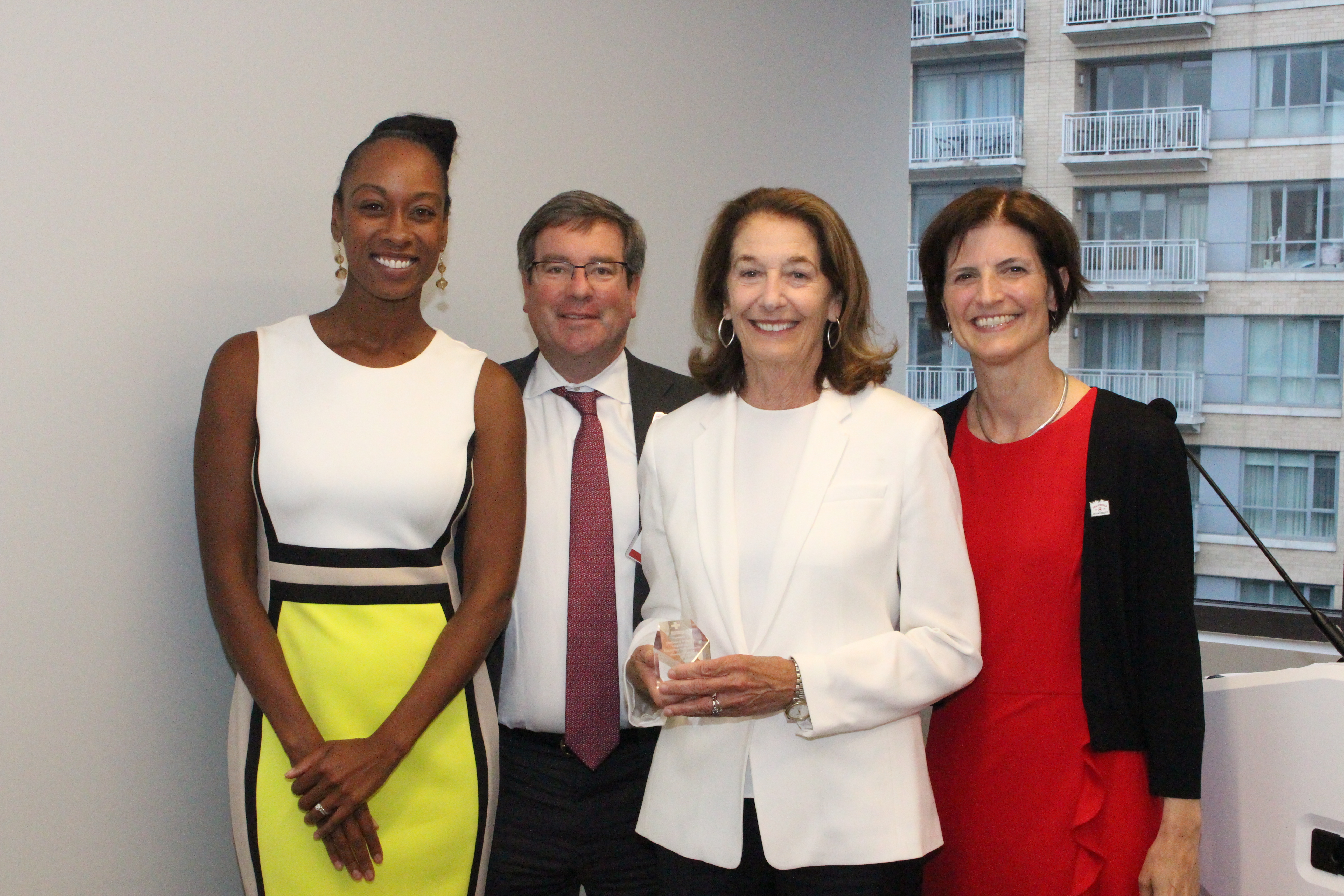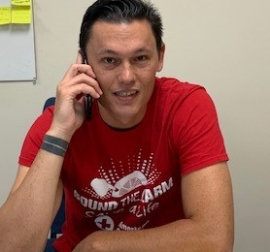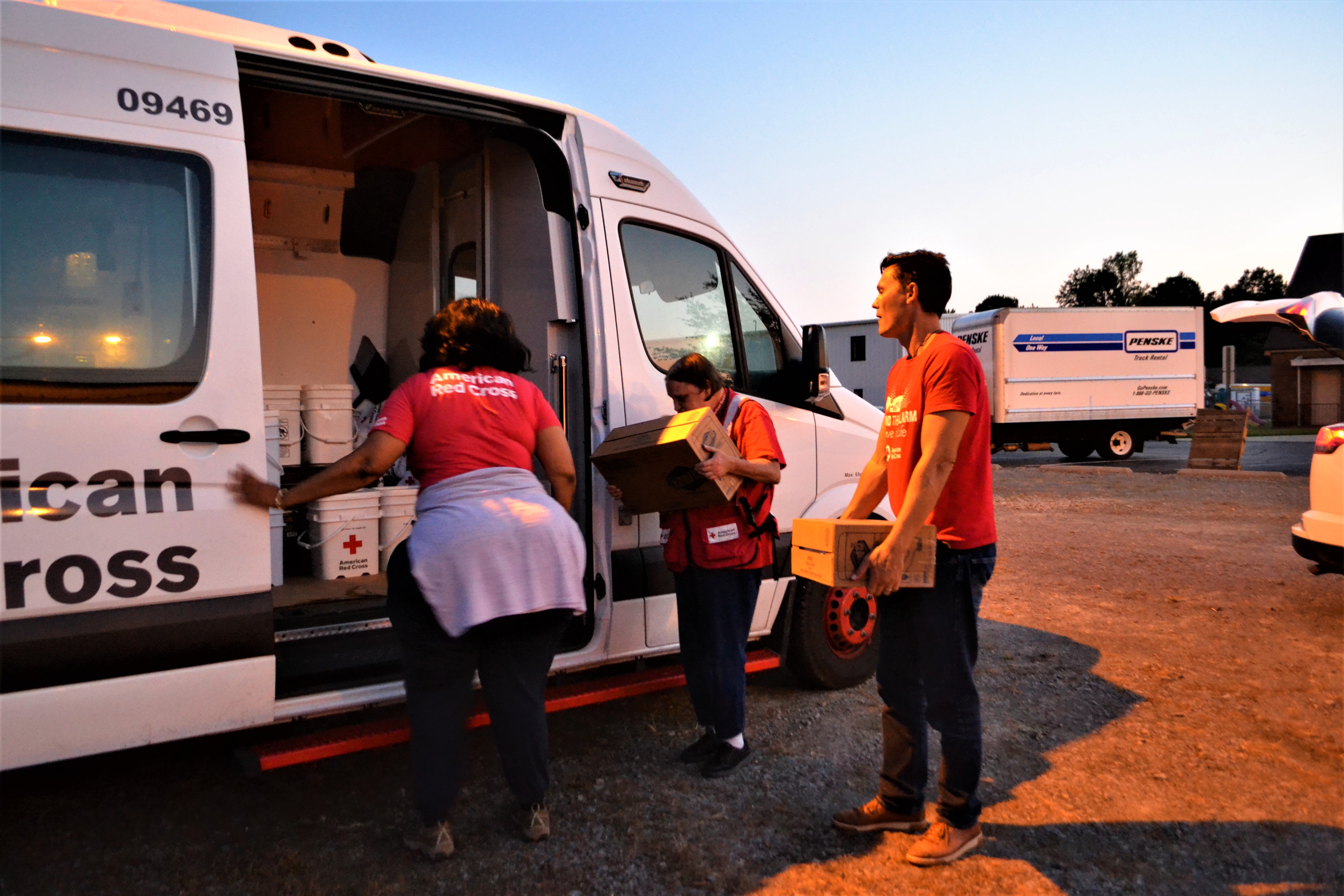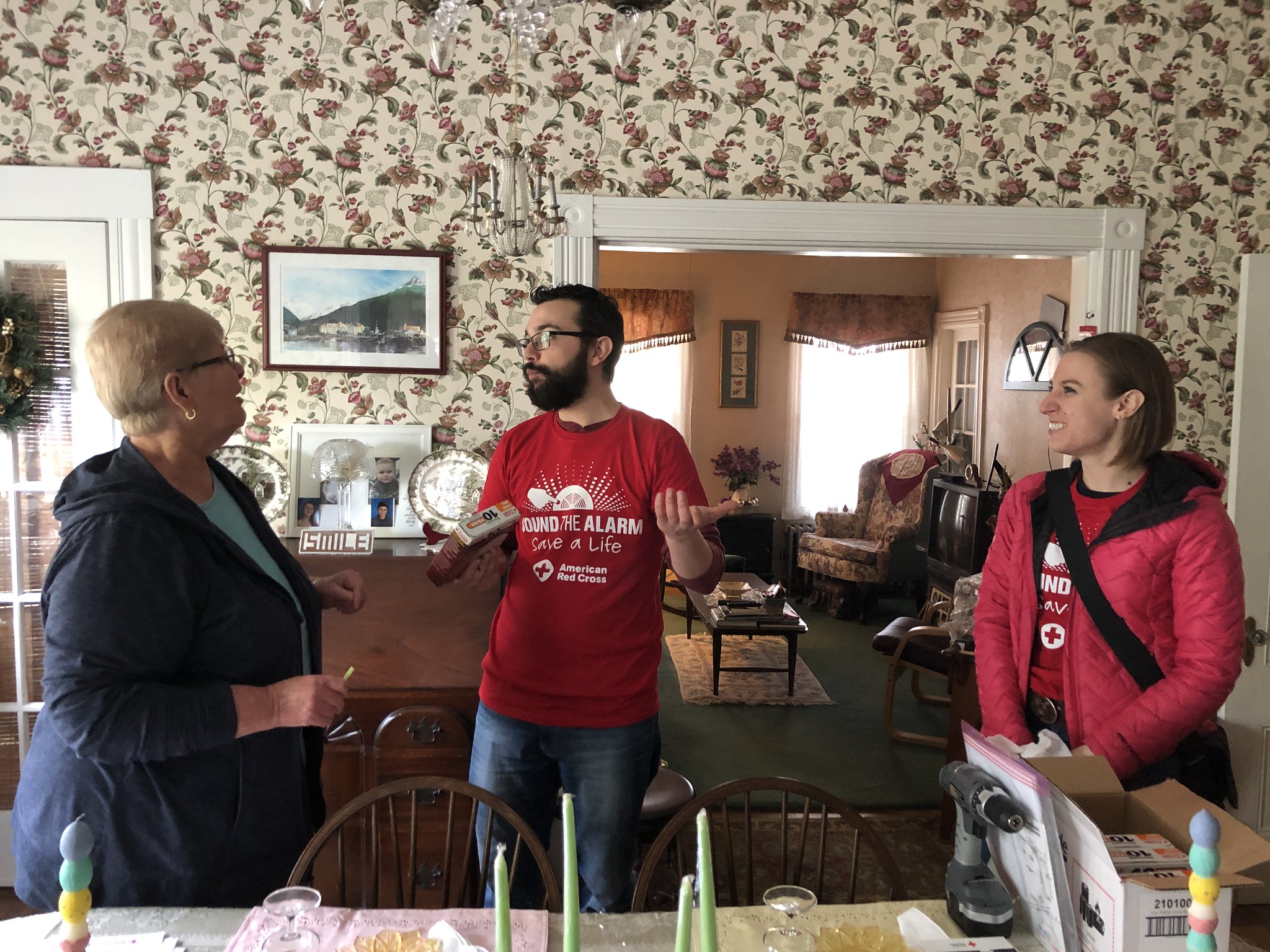
The American Red Cross honored 17 volunteers from across Massachusetts for their service to local communities and the mission of alleviating human suffering.
Also honored was Harvard Pilgrim Healthcare disaster volunteers for their commitment to make their local community more resilient to disasters.
At the region’s annual meeting in Medford, MA, as well as at a volunteer appreciation event in Worcester, MA, members of the senior leadership staff and the region’s board of directors recognized outstanding achievement by our region’s volunteers.
Holly Grant, the CEO of the Massachusetts region, recognized each of the 17 volunteers and Harvard Pilgrim Healthcare with the help of Board Chair John Stadtler.
The honorees are:
Susan Gilbert – Communications Volunteer of the Year
Susan Gilbert edits the monthly Communications newsletter, editing and writing information regarding all departments – Biomedical Services, Development, Service to the Armed Forces and International Services, Disaster Cycle Services, Communications and Marketing, Training Services, as well as regional news. Her articles include such topics as deployments, our Annual Heroes’ breakfasts, the food pantry, and our mentoring program.
Susan has volunteered with the Red Cross for four years. In addition to her current roles, she has participated in the Home Fire campaign, Sound the Alarm campaign, and written numerous volunteer bios.
Lexi Ashraf – Youth Programs Volunteer of the Year
Lexi is an outstanding volunteer and a role model for all. She is a rising senior at Wellesley High School where she is the president of her school’s Red Cross Club. Lexi became interested in the Red Cross when she volunteered at the Red Cross Food Pantry in Boston and has expanded her club so that others can have the same experience. Lexi continually involves herself in the Red Cross mission and participated in this year’s Sound the Alarm. Her goal is to continue the club’s growth and lead others to make impacts in their local communities.

Peter Schubert – Herbert Cook Award
Peter began as a volunteer in early 2017, and now is involved heavily in our Disaster Action Team, taking a few shifts a week. He’s also on the Regional Mass Care Leadership Team, a BioMedical transportation volunteer and part of our Community Disaster Education Team. Because of his love for the Red Cross, and for our volunteers, he also joined our On-Boarding Team, supporting new volunteers during the first months of their time with the American Red Cross. His cheerful attitude and willingness to always support our mission is ever present and a valuable member of our Massachusetts team.
The Herbert Cook Award recognizes volunteers who demonstrate dedication, skills and excellence in a leadership role through Disaster Services.
Charlie Vose – The Jerry Tice Award
Charlie Vose has spent his life educating and caring for others with a humanitarian spirit that continues to shine after nearly 40 years of Red Cross service. Charlie was a middle school teach for 34 years, focusing on science and mathematics. He brought his passion for teaching to the Red Cross as well, teaching first aid and CPR to the community. A long-time disaster responder in the Northeast, Charlie served as emergency service director, as well as being a member of the board of directors in the Northeast. He was instrumental in training local school staff in CPR and first aid, knowing its importance when teaching children.
The Jerry Tice Award recognizes volunteers for education, skills, excellence and service to others through Disaster Services in addition to another area of service.
Regina MacKenzie – Mass Bay Disaster Services Volunteer of the Year
Regina MacKenzie has made a significant impact in the Mass Bay Chapter since her start in 2017. She serves in various capacities in the Boston Metro area, as a Metro 2 DAT responder, a health service team member, deployment coach and as a Boston Marathon medical tent volunteer. Regina has also worked locally with the Home Fire Campaign, installing alarms in Quincy.
She is known across the Metro area for her willingness to support all functions within disaster services, and her compassion toward clients to ensure their success is incredible.
Renee Charpentier – Dorothy ‘Dottie’ D’Ambrosio Award
Renee Charpentier began volunteering with the Red Cross in November of 2017, but in that short time she has become an important part of the Metro Disaster Action Teams. Responding to local disasters from Quincy to East Boston, Renee’s leadership role has increased to include working closely with the Disaster Program Manager to ensure adequate Red Cross response to local disasters.
Renee Charpentier is this year’s recipient of the Dorothy ‘Dottie’ D’Ambrosio Award, given to a volunteer who has shown a compassion for assisting and caring for families following a disaster and demonstrates a passion for mentoring new volunteers.
Steven Latasa-Nicks - Cape, Islands and Southeast Massachusetts Chapter Disaster Services Volunteer of the Year
Steven Latasa-Nicks joined the American Red Cross as a CPR instructor to assist in his local community of Provincetown. While conducting his train-the-trainer session at the Hyannis Chapter office, he realized there were other opportunities within the organization. Steven started out as a DAT trainee and worked with Eddy Blanchard to speed through the program. He is now the captain for the Lower Cape and supervises a team of twenty volunteers. Through his efforts and positive spirit, the Red Cross has strengthened its relationships with local fire departments, police and emergency management agencies.
Steven has been a force, helping to recruit new volunteers to respond to local disasters and emergencies.
Stephanie Walsh – Chief Executive Officer’s Award
Stephanie Walsh is being honored with the Chief Executive Officer’s Award. Stephanie started as a Disaster Action Team volunteer with the Red Cross. One of her first responses was to the Boston Marathon bombings. Throughout the year following the bombings, she went on to become a DAT captain and assisted a national team in virtually assessing areas impacted by disasters. She also helped create reports for the Region. Through her continued work at the Region, she was nominated to fill the role as Course Medical Coordinator for the Red Cross work with the annual Boston Marathon.
She graciously accepted this role and has just completed her sixth marathon leading the Course Medical Team. She continues to work full time at MEDITECH, now as a Manager of Corporate Technologies, and is the proud mom of two children.
David Reed – Northeast Massachusetts Chapter Disaster Services Volunteer of the Year
David Reed joined the Disaster Action Team of the Northeast in September 2017. His warm and caring personality makes him a perfect caseworker on scene, always meeting client needs with a friendly smile and an encouraging words. He was extremely helpful during the gas explosion in the Merrimack Valley where he worked at the various evacuation centers in Lawrence, Andover and North Andover, as well as the Multi-Agency Resource Center. A fluent Spanish speaker, Dave was instrumental during the Sound the Alarm events in Lawrence, Andover and North Andover. Dave called and coordinated appointment with Spanish speaking clients to ensure the event was a success.
Jo Fitzgerald – Volunteer Services Volunteer of the Year
Jo Fitzgerald joined the Red Cross in March of 2017 as a Blood Donor Ambassador and went on to join the Recovery Casework Team and the Regional Volunteer Screening. Jo continues to enjoy her work in all three roles. In the past two years, she has given more than 1,350 hours of her time. She is a valuable and reliable team member, helping onboard and place new volunteers into positions they will enjoy and where their skills are best used. Most notable, Jo was assigned to the Merrimack Valley gas explosion response for 10 days, giving 100 hours of her time. She worked tirelessly to call the increase of new applicants, and place them into meaningful roles. Her efficiency, professionalism, and can-do spirit contribute directly to the success of screening and placement of volunteers in Massachusetts.

Dorothy Cichonski – Western Massachusetts Disaster Services Volunteer of the Year
Dorothy Cichonski joined the American Red Cross of Western Massachusetts Chapter in 2013. She quickly became an integral part of the Disaster team, where she stood out as a leader. Dorothy is a DAT Supervisor, Duty Officer, Pillow Case Project presenter, Home Fire Campaign educator and she coordinates all the community preparedness events in the Western Territory. She is a wonderful mentor to the trainees assigned to her and can be counted on to run the Disaster office when staff is called away, and is highly respected by her peers for her knowledge of the Western Territory.
Robert Adamski – Training Services Volunteer of the Year
Robert Adamski is a Volunteer Instructor in Eastern Massachusetts. He teaches community level and professional level Basic Life Support, First Aid and CPR classes in the American Red Cross Blood Donation facility in Dedham, MA. He has been a nationally registered paramedic and firefighter for over 20 years.
He started volunteering with the Red Cross in Pennsylvania in 1988, and became an instructor in 1993. Rob has said ‘an instructor can make a real difference in peoples’ lives, can save lives and exponentially increase the acquisition of lifesaving skills across his community.’ He fervently believes in giving something back to your community and helping others.
Joel Janovsky – Service to the Armed Forces team as the Volunteer of the Year
Joel Janovsky is retired from a 30-year career in information technology in which he held positions in software engineering and project management for a variety of Massachusetts employers, including Biogen, Harvard University, Fidelity Investments, and Iron Mountain. He attended the University of Massachusetts/Amherst where he received an undergraduate degree in computer systems engineering, and he has a graduate degree in computer science from Boston University. Joel served in the Marine Corps during the 1970s in a military police/corrections unit at Camp Pendleton and as a Marine embassy guard in Vienna, Austria. Joel and his wife Amy are long-time residents of Andover Massachusetts.
Robert Campbell – Service to the Armed Forces team as the Volunteer of the Year
Robert Campbell is retired from a 30-year career in defense contracting, where he was responsible for contracts valued at about $500 billion at 18 major contract management offices. He attended the University of Massachusetts, Boston, where he received an undergraduate degree in business management, and he has a graduate degree from the U.S. Naval War College with a in National Security and Strategic Studies. Bob is a veteran of the U.S. military and currently is working with the American Red Cross to provide service to our military via the military entrance processing stations.
Leonard Harris – Central Massachusetts Disaster Services Volunteer of the Year
An accomplished Emergency Medical Technician, Leonard Harris joined the Central Massachusetts Disaster Action Team in 2013. He has been an invaluable member of the team, reliably willing and able to mobilize in support of an incident – whether scheduled to do so or not. His service to the community includes extensive work with the Home Fire Campaign, and most recently with the team’s efforts to strengthen partnerships with all 62 emergency management departments in Central Massachusetts.
Jim Niedzolkowski – BioMedical Services Volunteer of the Year
Jim Niedzolkowski has been a positive fixture in Blood Services since 2010. He began working blood drives and quickly took on training new donor ambassadors. New ambassadors described Jim as a person who generated positive energy and enthusiasm for new volunteers.
Jim went on to join the Donor Recruitment Team, putting up signs for upcoming blood drives around the region. He would also go on to join the Transportation Program, delivering new donations to the Dedham facility for processing. He also helps coordinate vehicle scheduled maintenance for the fleet of transportation vehicles here in Massachusetts.
With all his volunteerism, Jim’s proudest accomplishment is the 107 times he has donated platelets.
His nearly 1,000 hours of volunteer service since 2010 shows his commitment to the Red Cross mission.

Harvard Pilgrim Healthcare – Chandler Blackington Award
What started as a small group of volunteers trained to support local shelters expanded to a much larger group of disaster volunteers. In the past year, the Harvard Pilgrim Team has trained over 50 employees in sheltering, installed smoke alarms and built comfort kits for children. Although the shelter team hasn’t yet been activated, every time there is a significant disaster in Eastern Massachusetts the team reaches out, eager and ready to help. In the meantime, they are eager to continue to train and become more informed on how they can support the American Red Cross and our clients in times of disaster.
Betsy Eggleston – Boston Food Pantry Volunteer of the Year
Betsy Eggleston has volunteered in the Boston Food Pantry since November 2017. It did not take Betsy long to transition from first-time, Thanksgiving volunteer to core every day volunteer.
Betsy is a Wednesday morning regular, recording more than 260 volunteer hours this past year. She also volunteers many Thursday mornings, serving income eligible seniors in the Commodity Supplemental Food Program. Betsy displays a great ability to teach how to use our database and bar-code system to new volunteers just learning. She is the go-to person for the training function because of her abilities, patience, cool-head and trustworthiness.
The Red Cross has been helping Massachusetts residents for more than 100 years, bringing aid and comfort to those affected by disaster. One of the largest missions of the Red Cross in Massachusetts is the response to homes fires, which affected nearly 700 homes last year. Volunteers respond to assist residents displaced by home fires, 24 hours a day, 365 days a year.

















 On Sunday, September 15th, I returned from North Carolina where I supported the people affected by Hurricane Dorian. When I departed from Massachusetts just a week prior, I had been informed that I would lead a team of Red Crossers in the implementation of a recovery program that offers immediate assistance to households severely affected by the storm.
On Sunday, September 15th, I returned from North Carolina where I supported the people affected by Hurricane Dorian. When I departed from Massachusetts just a week prior, I had been informed that I would lead a team of Red Crossers in the implementation of a recovery program that offers immediate assistance to households severely affected by the storm.







 Be sure to download the free Red Cross Emergency App and encourage others to do the same. This app features expert advice on how to prepare and respond to 14 different types of emergencies and disasters. It allows you to customize more than 35 emergency alerts and includes a map with local Red Cross shelters. Text GETEMERGENCY to 90999 or search “Red Cross Emergency” in the Apple App Store or Google Play Store.
Be sure to download the free Red Cross Emergency App and encourage others to do the same. This app features expert advice on how to prepare and respond to 14 different types of emergencies and disasters. It allows you to customize more than 35 emergency alerts and includes a map with local Red Cross shelters. Text GETEMERGENCY to 90999 or search “Red Cross Emergency” in the Apple App Store or Google Play Store.









